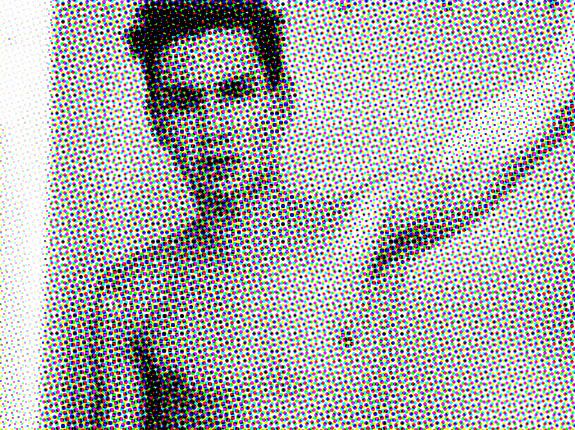
Mark Morrisroe was a photographer and performance artist who grew up in Malden, Massachusetts, the son of a drug-addicted mother. He was a prostitute by the age of fifteen and was shot in the chest by a john at seventeen; the bullet remained lodged, too close to the spine to remove. His photography and performances epitomized the influence of queer punk in the art world in the 1980s and achieved a self-baring radical candor, like that of David Wojnarowicz, especially in his precipitous and fatal illness. He died in 1989.
Fairfield and Anne Porter had James Schuyler as a long-term guest rather than a housesitter, on and off for twelve years, although Schuyler periodically retreated without the Porters to one of their homes, at Great Spruce Head, Long Island. Freely Espousing, written during this time, was dedicated to the couple. After Fairfield Porter died, Anne Porter was one of the benefactors who set up “the Fund” that would afford Schuyler a moderately independent home life.
The fuller passage of the 1995 poem “Untitled [‘I always put my pussy’]” by Eileen Myles is: “I always put my pussy / in the middle of trees / like a waterfall / like a doorway to God / like a flock of birds.”
The divot at the top of the sternum is properly known as the suprasternal notch, or the jugular notch. There is no agreement on a more common, vulgate word for it in English; Germans call it Das Salzfässchen, or—literally—the salt cellar.
The risk in tickling past the point of pleasure is, for Adam Phillips, the child’s “hysteria,” “humiliation,” and “intensely anguished confusion.” He makes no extrapolation from the experience of disarray in being tickled to other corollary fears of uncontainability. But from a comparative study of phobias in “First Hates,” an essay elsewhere in On Tickling, Kissing, and Being Bored, he derives a kind of two-degree structure of fear.
“The tickling narrative, unlike the sex narrative, has no climax.”
The term proprioception (as was the term interoception) was coined by English neurophysiologist Charles Scott Sherrington, in 1905. Charles Olson, sixty years later, appropriated the word to describe a poetics in which no external recourse is sought by the poet who reports only the experience of the unique self and the complex sense organ of its human body and the associations of its intellect.
The most direct route from Tucson to Washington University in St. Louis is 1,483 miles.
In 1980, “Tumbleweed” was the first hit for crossover Country artist Sylvia, best known for her 1982 Country Billboard number one record, “Nobody.” Juice Newton never recorded either song.
The tumbleweed diaspore can be a flower cluster of a plant as well as the entire aboveground plant. Species that form tumbleweeds, most common to the amaranth and saltwort families, also exist in the mustard, legume, aster, plantain, and nightshade families in desert and steppe climates. Baby’s breath, in its maturity, forms tumbleweeds.
This piece is the rolling endnote for a series excerpted from Onesheets. You can read the series below.
Brian Blanchfield is the author of two full-length books of poetry: Not Even Then: Poems (New California Poetry), published in 2004 by University of California Press, and A Several World, to be published this coming March from Nightboat Books, as well as a chapbook, The History of Ideas, 1973-2012, forthcoming imminently. He lives in Tucson, Arizona.
The above represents the rolling corrective endnote to a collection of short, unresearched, disinhibited, single-subject essays called Onesheets. (The full working title is Onesheets: Brief Studies, Permitting Shame, Error and Guilt, Myself the Single Source.) Central to the go-it-alone, internet-off nature of the writing project is a suppression of the impulse to consult secondary sources, print or electronic, and on his own authority he gets a few things wrong.

